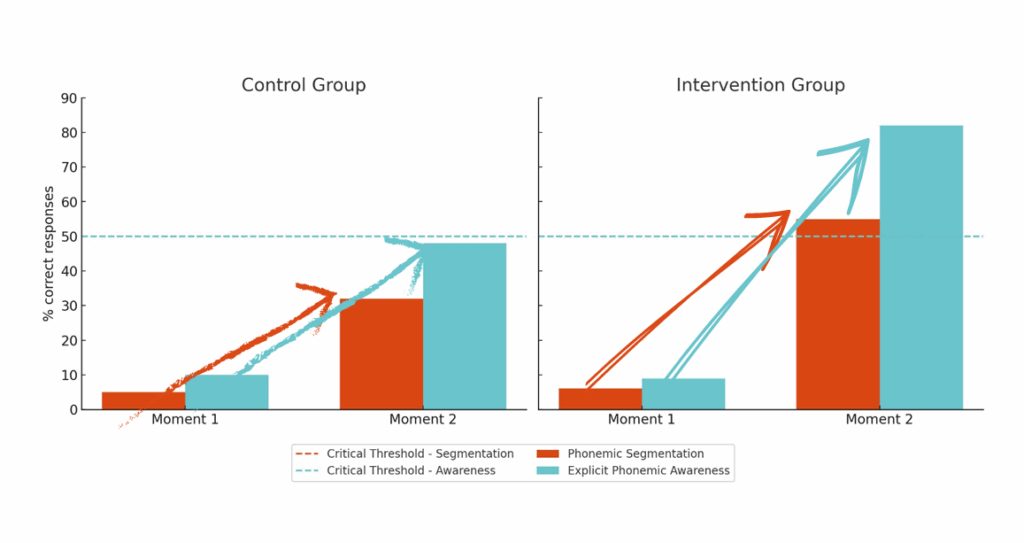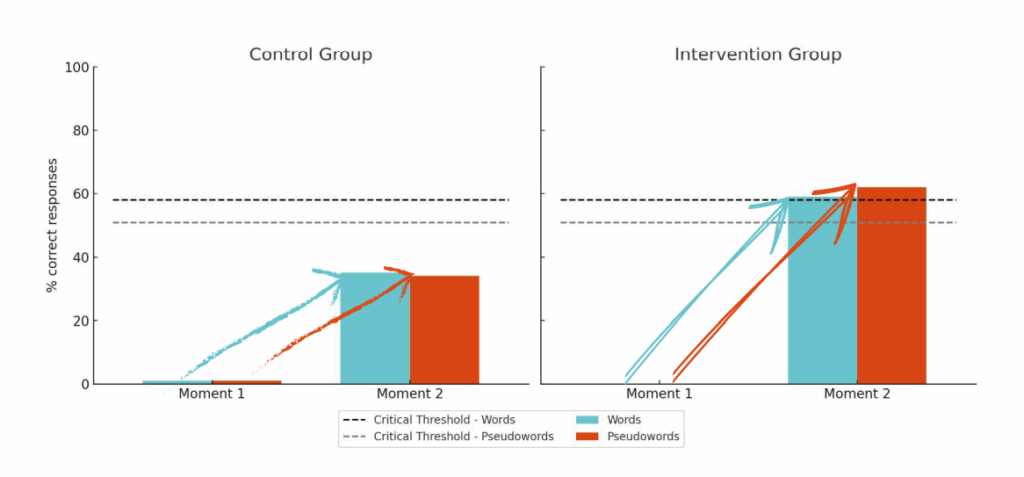
Compared results in two key skills for learning to read:


Two groups of children were assessed at two different times:
Control Group – children who did not take part in the intervention;
Intervention Group – children who benefited from the structured Leiamos methodology.
What does the data show?
At Moment 1, both groups performed poorly.
At Moment 2, the Intervention Group clearly exceeds the Critical Values defined for each competence.
The Control Group also progresses, but without reaching the minimum desirable values.
The arrows visually illustrate the evolution of each group’s performance between the two moments.
Conclusion
The application of the Leiamos methodology had a significant impact on the students’ phonemic awareness. This evolution shows how a well-structured intervention can change the learning path and promote essential reading skills.

Results from two groups of children assessed at two different times:
Control Group – did not take part in the intervention;
Intervention Group – participated in the application of the Leiamos methodology.
The children were assessed in two domains:


What was observed?
At Moment 1, both groups performed very poorly.
At Moment 2, the Intervention Group exceeded the critical values defined as minimum acceptable for their age (58% for words and 50.8% for pseudo-words).
The Control Group also improved, but remained below these thresholds.
Conclusion
The pedagogical intervention based on the Leiamos methodology had a clear impact: it allowed the target group to reach – and surpass – the minimum levels of performance, showing that it is possible to change failure trajectories through structured tools and continuous monitoring.






